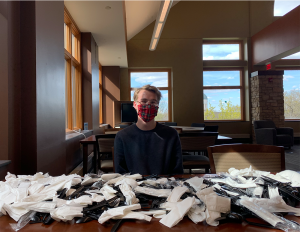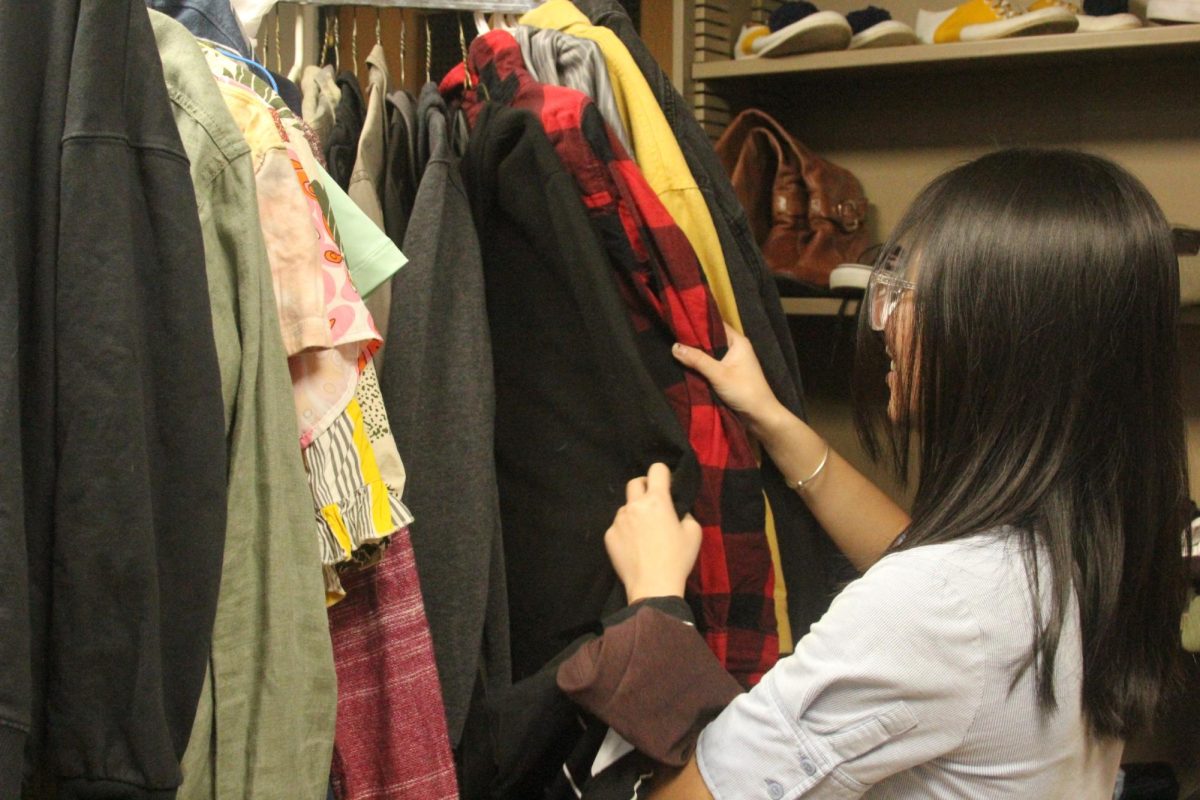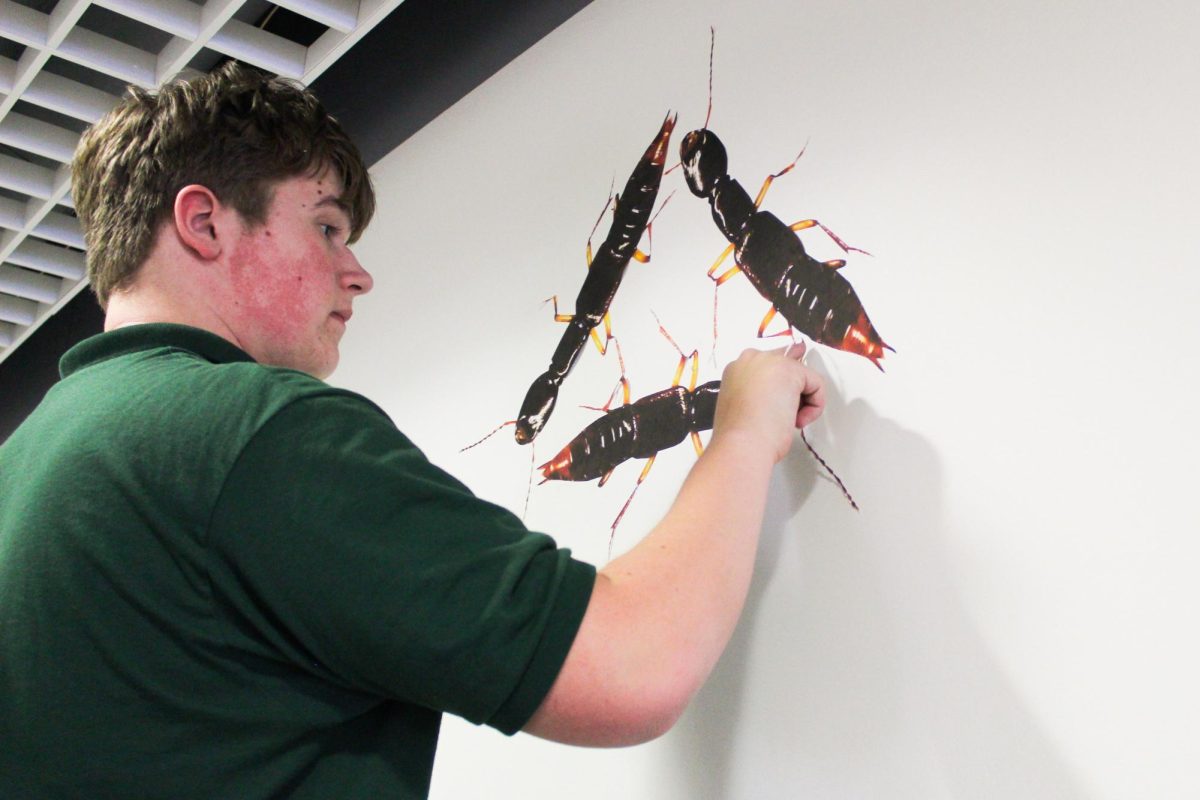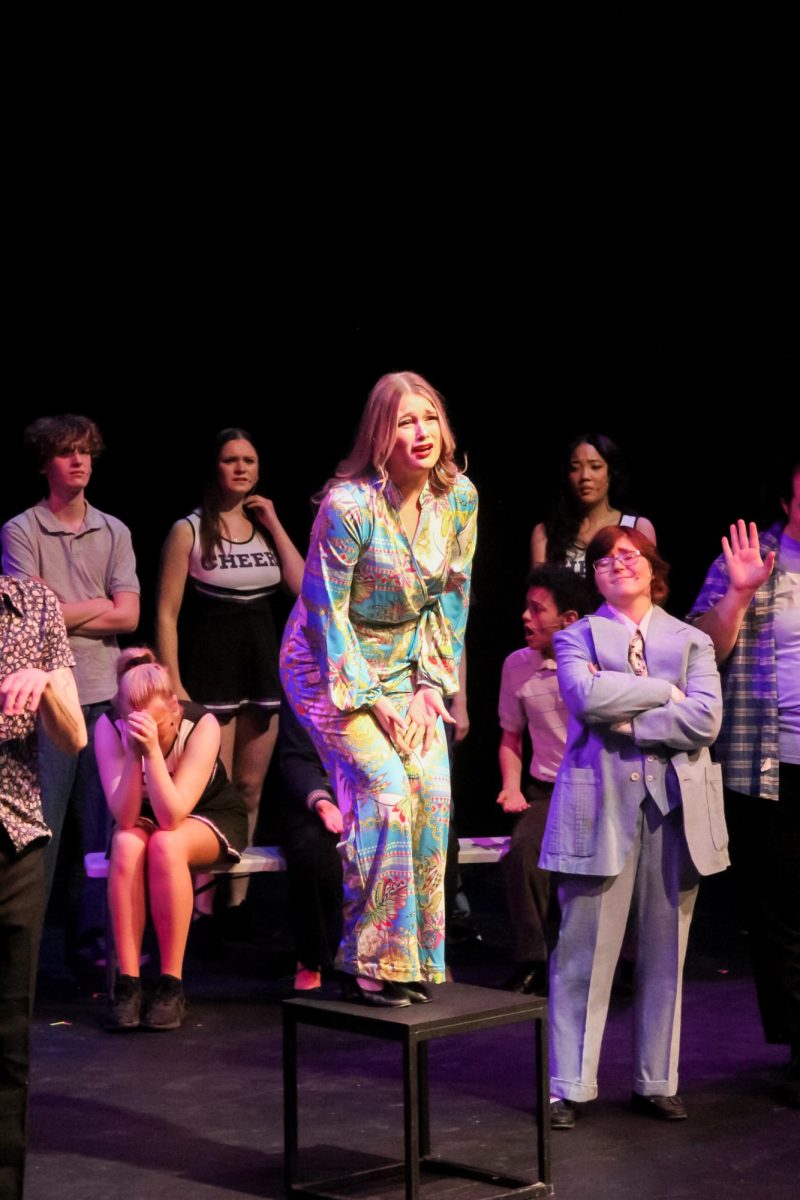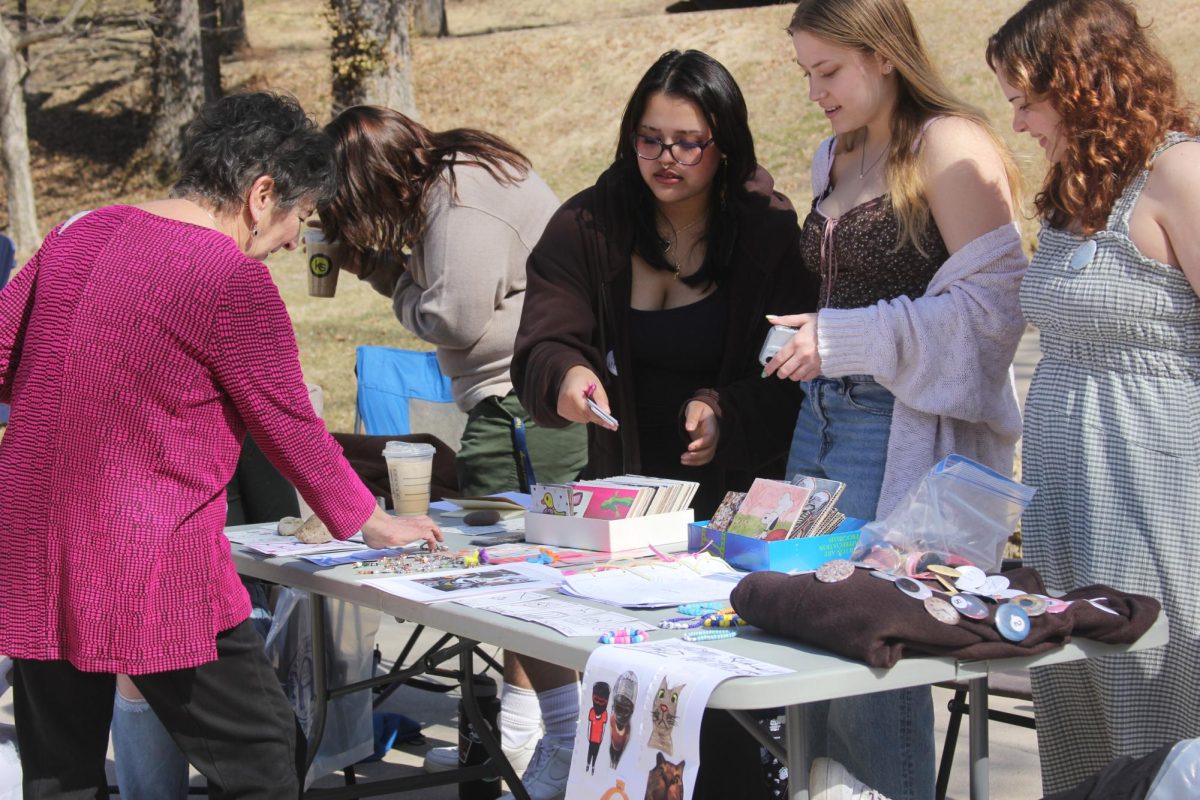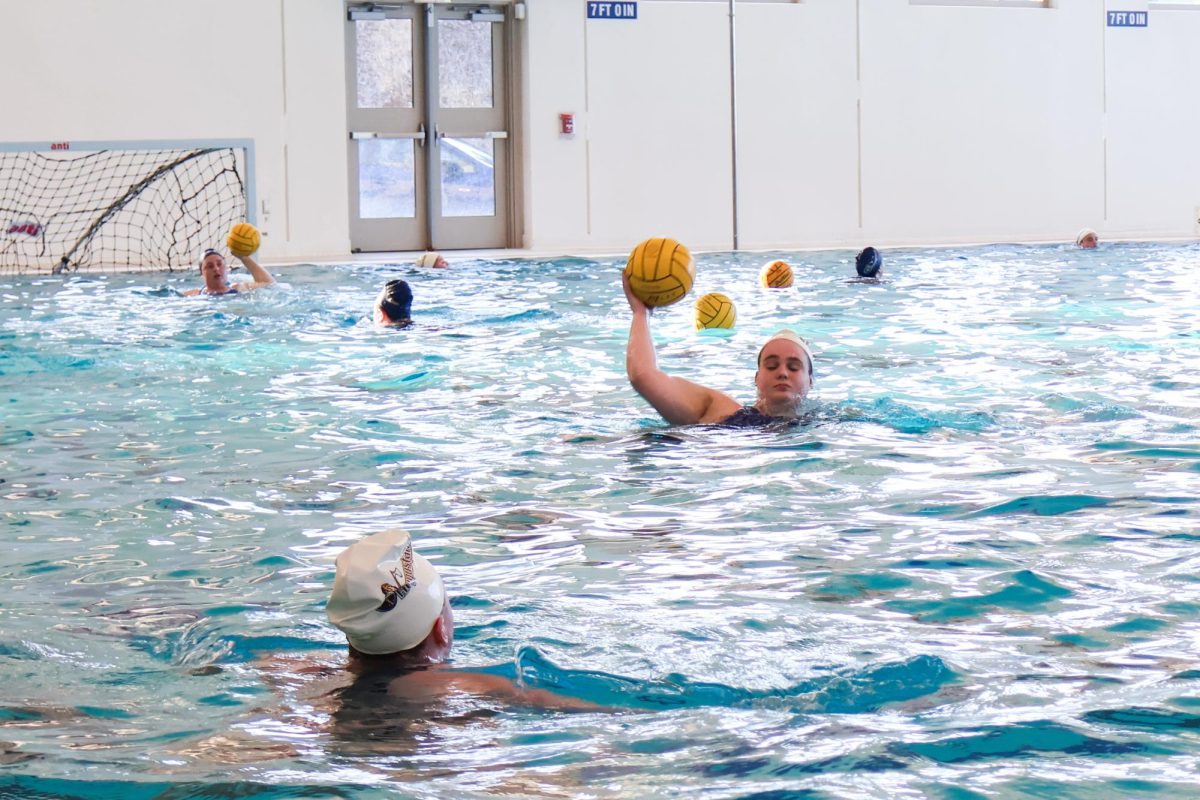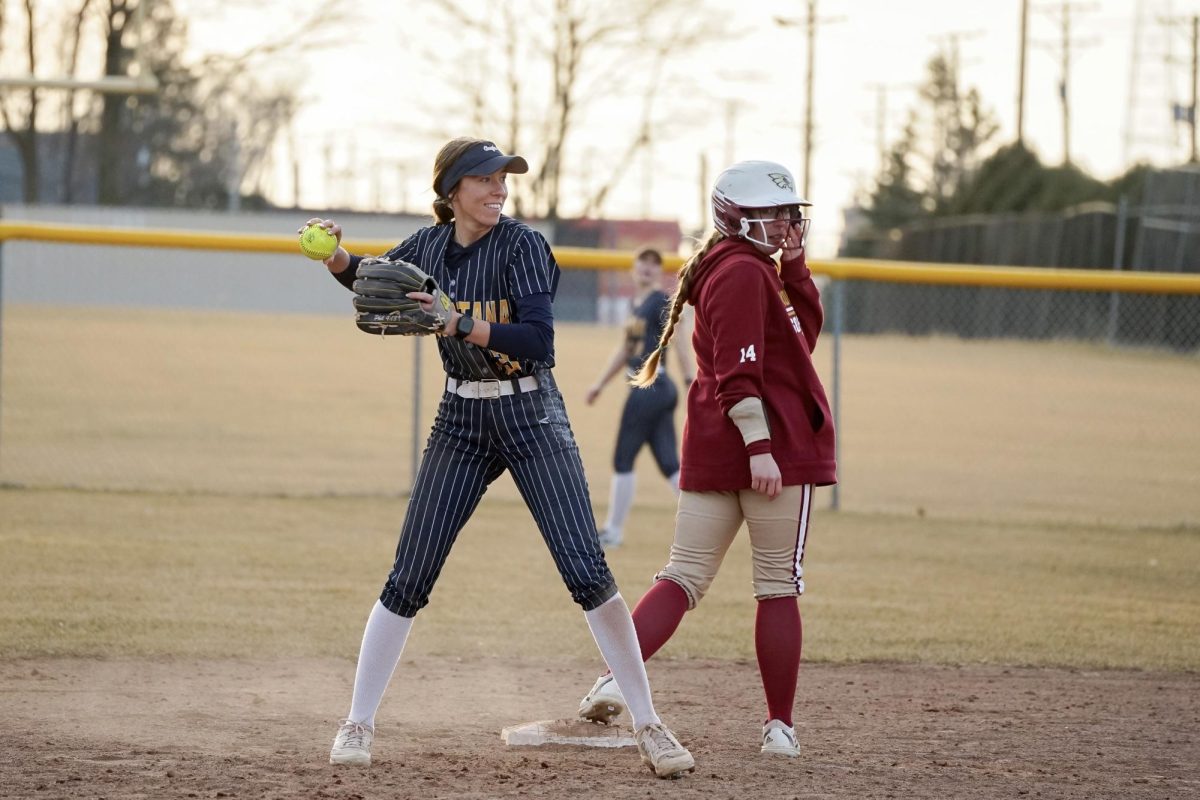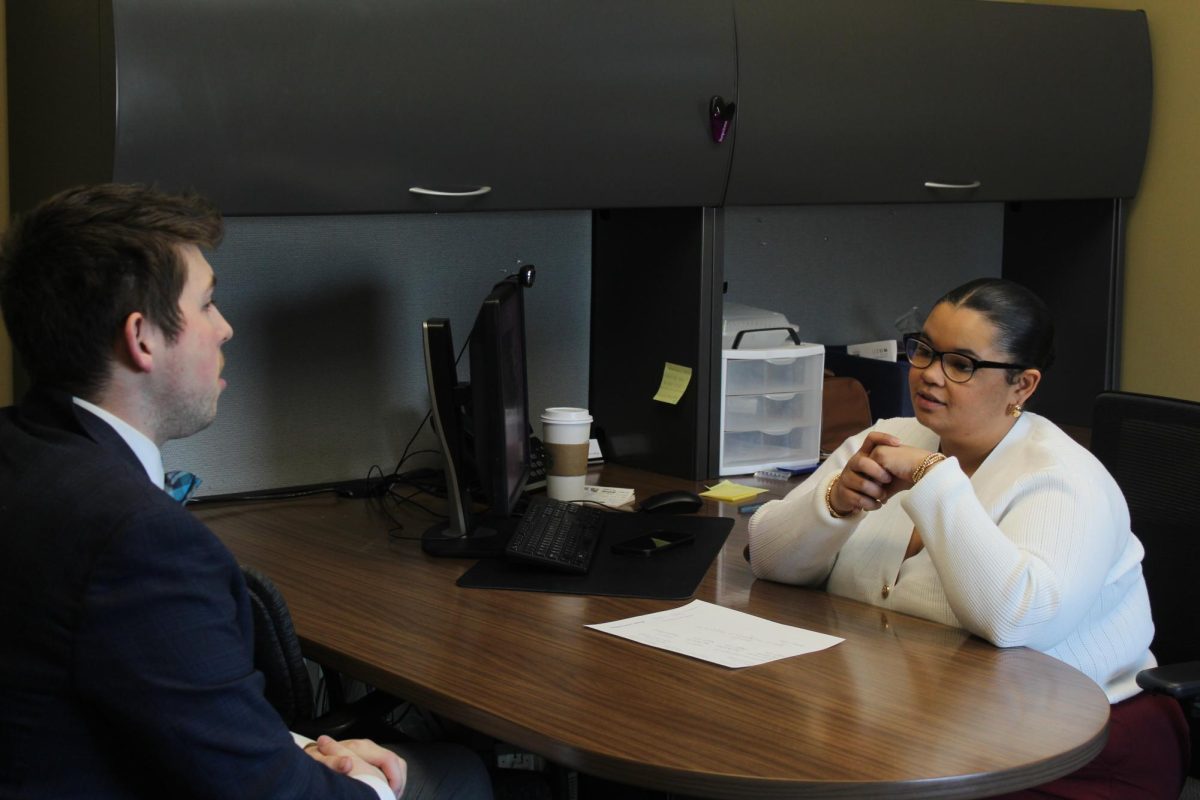Byline: Peter Moens and Carly Davis
Jack Brandt, first year, sat down in front of me with two overflowing plastic bags. When he put them down, spoons and knives spilled onto the table in the fishbowl. The pile stretched across the whole length of the table, built up by paper napkins and some still-sealed packets of silverware. All of these, he told me, came from the dining hall.
Instead of dropping his unused silverware on the conveyor belt after eating, Brandt has made a habit of keeping anything left to donate.
“I have a lot and I had a lot last semester,” Brandt said. “There’s, I don’t know, a thousand or so of us that eat in the dining hall every day and I see everyone throwing them away. I tell people that I donate them and they look at me like I’m crazy.”
At the beginning of the 2021-21 academic year, dining services made the call to replace the usual bins of metal silverware with plastic packages. If students only need a fork or spoon, they’re out of luck.
“It was issued in June that it’s required to use disposable silverware or, if possible, you needed to use rolled silverware or silverware in plastic sleeves. As you can imagine, that’s quite a labor process in itself to roll approximately 1500 [sets of] silverware a day,” Fred Kurt, director of dining & auxiliary services, said.
Instead of rolling silverware in fabric napkins for students, dining services opted to purchase individual, disposable packages. Students are able to bring their own silverware to eat, but others are stuck with whatever options are available.
Freshmen like Brandt, who eat the majority of their meals in the Gerber Center or snack shack, end up using plenty of plastic silverware after 12 to 15 meals a week. Those numbers add up.
After the first semester, Brandt donated a number of his unused silverware. “I kept all of the utensils that I hadn’t used and brought them home, and I donated them to a homeless center in Kane County. The homeless center took the sealed ones and the salt and pepper, and then I took the rest to my high school,” Brandt said.
Other students keep their single-use silverware for when they may need it later.
“When I don’t use all of my silverware in the dining hall, I put it in my backpack and save it for later so that I can use it for another meal or set it aside for when someone else needs it,” Cassidy Wiltjer, sophomore, said.
Creating a stream of single-use plastic on a college campus doesn’t reflect Augustana’s push towards sustainability in recent years (with the development of solar power and previous availability of reusable takeout containers in the Gerber Center). However, dining services has had to change their usual ways in the pandemic.
“With COVID and all the changes in style of service, litter wasn’t really taken into consideration. Our main focus was on how we were gonna best serve our students in a safe manner,” Kurt.
In the midst of a public health crisis, long-term environmental efforts may be sacrificed in order to keep people healthy in the short term, and this philosophy has been engaged by both dining establishments and governments.
“It’s all based upon the governor’s orders and safety guidelines for restaurants and bars. If things continue to go in the proper direction between herd immunity and immunizations, ideally we’d want it returned to as close to normal as possible for the fall,” Kurt said.
There are also concerns of cost and practicality. Last year, Augustana experimented with “Tater Ware,” biodegradable utensils made from potatoes.
Unfortunately, utilizing Potato Ware on such a large scale was not deemed feasible: “With the change and high volume of usage, we couldn’t continue to use it because it cost almost as much as our actual metal silverware, and we’d be throwing it right in the garbage,” Kurt said.
Cost issues also explain why utensils are packaged together instead of individually. “Plastic silverware costs more individually than this packet of silverware [that’s] all pre-packaged together with even the salt and pepper,” Kurt said.
Other schools faced similar issues as biodegradable utensils, metal utensils and other options conflicted with budget cuts during the pandemic.
“For a lot of my colleagues that run dining operations throughout the college and university segment across the country, a lot of recycling and compostable items unfortunately went on the backburner a bit,” Kurt said.
While dining services intends to return to metal silverware in the future, no set plans have been made for the 2021-22 school year. Going forward, students will have to grapple with using single-use plastics as frequently as they have for the last year.
As a consequence of an uptick in plastic use, the realities of plastic decomposition have become a more pressing issue for environmentally conscious students.
“Plastic doesn’t break down, or, I guess it does, but it takes several of our lifetimes,” Sarah Leupkes, sophomore, said. Disposable plastic bags can break down in a few decades, while plastic silverware and bottles can take around 500 years.
However, plastics breaking down doesn’t mean they become part of the soil in the way composted food and paper waste will. Microplastics have lasting ecological effects that go beyond what the eye can see.
Through a process called bioaccumulation, animals low on the food chain will ingest microplastics after mistaking them for other organisms. As plastics move up the food chain, they accumulate in the stomachs of larger animals and lead to medical concerns.
Other consequences, such as chemicals leaching into soil and disrupting nutrient balance can disrupt plant life in bodies of water even on campus in places such as the slough. As Augustana is uphill of the Mississippi river, rainwater carries litter and construction runoff into the river, downtown Rock Island and lower campus (where Augie Acres is located).
Augustana students are no strangers to litter. On any given walk on campus, pieces of plastic, aluminum cans and wrappers populate walkways.
“[At] the slough I’ve seen like plastic bags in there and I don’t really know what to say, like, how did that get there?” Brandt said.
Most students don’t discard trash out on the quad or just toss it in the slough, though. A variety of factors have led to Augustana’s garbage problem, from the few trash cans to a lack of communal responsibility.
“Usually, people only litter when there’s not an audience. There’s a social pressure that if you’re caught littering, it reflects poorly on you, and this is a small enough campus that I don’t think people want to be caught doing that,” Leupkes said.
Solutions to the problem are hard to come by, as it isn’t coming from a single source. “I noticed that there’s a lot of littering primarily on paths where people walk the most, and I have beef with the fact that there’s not enough trash cans that would deter littering,” Leupkes said.
Increasing the amount of available trash cans and having them in view of pedestrian students provides an opportunity for students to properly dispose of their trash. Augustana’s conspicuous lack of recycling bins certainly doesn’t help the issue either.
“There’s no recycling bin in the c-store. People on shift, we get a free drink and all of them are plastic bottles, so when you finish you toss it in the trash. You can’t recycle it,” Leupkes said.
Student workers often don’t have the option to find the proper container to dispose of something while on the clock.
Theoretically, educating students about the importance of waste management and recycling would help to reform the issue.
“I think a lot of people just don’t care, and maybe the way to fix that is to understand that this can’t continue,” Brandt said.
Often, people require an incentive to fix a problem in addition to education. Augustana’s large number of student groups often require service hours and pride themselves on helping the campus community. “Greek life has required service hours, it would be helpful if they orchestrated pickup,” Leupkes said.
Organizing an effort to clean up high-traffic areas of campus with significant amounts of pollution such as the Swanson bridge, Slough path and sidewalks would improve students’ ecological footprint at Augustana and offset the continued use of single-use plastic silverware.
“We need to be good to the environment, and unfortunately, everyone probably curved a different direction because of cost and so forth,” Kurt said. Sometimes, the reality of a situation prevents one from pursuing more idealistic, long-term projects for a time.
But if you look and think hard enough, chances are good you’ll find some way to make things work, especially with something as important as the environment.
Graphic by Phoenix Agyepong
